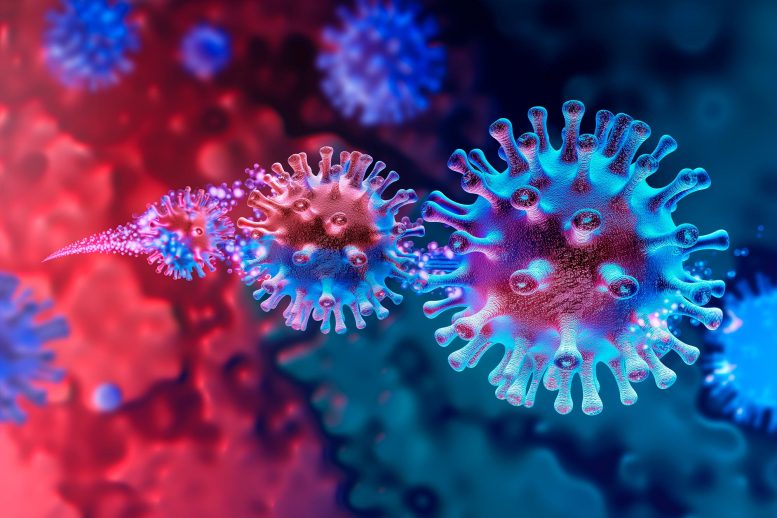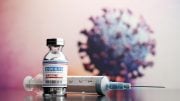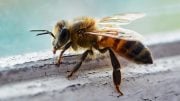
JN.1, a new COVID-19 variant detected in August 2023, has quickly spread worldwide, showing significant evolutionary changes from previous strains. This development calls for ongoing vigilance and adaptation in global health strategies. Credit: SciTechDaily.com
The JN.1 COVID-19 variant, emerging in late 2023, marks a significant shift in the virus’s evolution, emphasizing the need for sustained global health efforts.
Since it was detected in August 2023, the JN.1 variant of COVID has spread widely. It has become dominant in Australia and around the world, driving the biggest COVID wave seen in many jurisdictions for at least the past year.
The World Health Organization (WHO) classified JN.1 as a “variant of interest” in December 2023 and in January strongly stated COVID was a continuing global health threat causing “far too much” preventable disease with worrying potential for long-term health consequences.
"#COVID is still a global health threat, and it's causing far too much burden when we can prevent it.
Five, ten, years from now, what are we going to see in terms of cardiac impairment, of pulmonary impairment of neurologic impairment? We don't know."
– @mvankerkhove of @who pic.twitter.com/yB73YXekhb— United Nations Geneva (@UNGeneva) January 12, 2024
JN.1 is significant. First as a pathogen – it’s a surprisingly new-look version of SARS-CoV-2 (the virus that causes COVID) and is rapidly displacing other circulating strains (omicron XBB).
It’s also significant because of what it says about COVID’s evolution. Normally, SARS-CoV-2 variants look quite similar to what was there before, accumulating just a few mutations at a time that give the virus a meaningful advantage over its parent.
However, occasionally, as was the case when omicron (B.1.1.529) arose two years ago, variants emerge seemingly out of the blue that have markedly different characteristics to what was there before. This has significant implications for disease and transmission.
Until now, it wasn’t clear this “step-change” evolution would happen again, especially given the ongoing success of the steadily evolving omicron variants.
JN.1 is so distinct and causing such a wave of new infections that many are wondering whether the WHO will recognize JN.1 as the next variant of concern with its own Greek letter. In any case, with JN.1 we’ve entered a new phase of the pandemic.
Where did JN.1 come from?
The JN.1 (or BA.2.86.1.1) story begins with the emergence of its parent lineage BA.2.86 around mid-2023, which originated from a much earlier (2022) omicron sub-variant BA.2.
Chronic infections that may linger unresolved for months (if not years, in some people) likely play a role in the emergence of these step-change variants.
In chronically infected people, the virus silently tests and eventually retains many mutations that help it avoid immunity and survive in that person. For BA.2.86, this resulted in more than 30 mutations of the spike protein (a protein on the surface of SARS-CoV-2 that allows it to attach to our cells).
The sheer volume of infections occurring globally sets the scene for major viral evolution. SARS-CoV-2 continues to have a very high rate of mutation. Accordingly, JN.1 itself is already mutating and evolving quickly.
How is JN.1 different to other variants?
BA.2.86 and now JN.1 are behaving in a manner that looks unique in laboratory studies in two ways.
The first relates to how the virus evades immunity. JN.1 has inherited more than 30 mutations in its spike protein. It also acquired a new mutation, L455S, which further decreases the ability of antibodies (one part of the immune system’s protective response) to bind to the virus and prevent infection.
The second involves changes to the way JN.1 enters and replicates in our cells. Without delving into the molecular details, recent high-profile lab-based research from the United States and Europe observed BA.2.86 to enter cells from the lung in a similar way to pre-omicron variants like delta. However, in contrast, preliminary work by Australia’s Kirby Institute using different techniques finds replication characteristics that are aligned better with omicron lineages.
Further research to resolve these different cell entry findings is important because it has implications for where the virus may prefer to replicate in the body, which could affect disease severity and transmission.
Whatever the case, these findings show JN.1 (and SARS-CoV-2 in general) can not only navigate its way around our immune system, but is finding new ways to infect cells and transmit effectively. We need to further study how this plays out in people and how it affects clinical outcomes.
Is JN.1 more severe?
The step-change evolution of BA.2.86, combined with the immune-evading features in JN.1, has given the virus a global growth advantage well beyond the XBB.1-based lineages we faced in 2023.
Despite these features, evidence suggests our adaptive immune system could still recognize and respond to BA.286 and JN.1 effectively. Updated monovalent vaccines, tests, and treatments remain effective against JN.1.
There are two elements to “severity”: first if it is more “intrinsically” severe (worse illness with an infection in the absence of any immunity) and second if the virus has greater transmission, causing greater illness and deaths, simply because it infects more people. The latter is certainly the case with JN.1.
What next?
We simply don’t know if this virus is on an evolutionary track to becoming the “next common cold” or not, nor have any idea of what that timeframe might be. While examining the trajectories of four historic coronaviruses could give us a glimpse of where we may be heading, this should be considered as just one possible path. The emergence of JN.1 underlines that we are experiencing a continuing epidemic with COVID and that looks like the way forward for the foreseeable future.
We are now in a new pandemic phase: post-emergency. Yet COVID remains the major infectious disease causing harm globally, from both acute infections and long COVID. At a societal and an individual level we need to re-think the risks of accepting wave after wave of infection.
Altogether, this underscores the importance of comprehensive strategies to reduce COVID transmission and impacts, with the least imposition (such as clean indoor air interventions).
People are advised to continue to take active steps to protect themselves and those around them.
For better pandemic preparedness for emerging threats and an improved response to the current one it is crucial we continue global surveillance. The low representation of low- and middle-income countries is a concerning blind spot. Intensified research is also crucial.
Written by:
- Suman Majumdar – Associate Professor and Chief Health Officer – COVID and Health Emergencies, Burnet Institute
- Brendan Crabb – Director and CEO, Burnet Institute
- Emma Pakula – Senior Research and Policy Officer, Burnet Institute
- Stuart Turville – Associate Professor, Immunovirology and Pathogenesis Program, Kirby Institute, UNSW Sydney
Adapted from an article originally published in The Conversation.![]()









I like the idea of a conversation between science and the public, but these The Conversation adaptation articles have a significant bias, and distilling their writing down concentrates it. It’s adding another intermediary, adding more spin.
“we need to re-think the risks of accepting wave after wave of infection” they say in denial, without proposing an alternative to acceptance. We tried every weapon in the arsenal against COVID-19, made new weapons, and still had to accept wave after wave. Some weapons backfired too, leading to suffering and deaths we don’t talk about. They did link a The Lancet article, which advises improving healthcare and some DIE racial and gender goals, as if either will prevent infection by this or any other variants. The direct advice in the article, “such as clean air intervention”, is sadly ineffective in the real-world (SciTechDaily “Busting the Myth: Air Cleaners Fail To Prevent Sickness, Study Finds” Jan 10 2024), or at least pragmatically far less effective than I stubbornly still believe.
The info on JN.1 is interesting, but conceptually, not actionably. The addition of anxious The Conversation politics is irritating, and their advice is tragic.
As an aside, the headline is almost on the wrong article. Game-changer? Same game, same problem, same advice, same failure — unsurprisingly non-different.
nah, you’re way wrong mr denier, and diversity, inclusivity and equity are great principles which denied mean you’re for lack of diversity, exclusivity and non-equity, what do you stand for?, wait, not interested
Thank you! Exactly my point. I did not deny or even characterize those “great principles” of yours one way or the other. I said the bias of The Conversation adds irrelevant politics to science and technology articles, blocking any useful message it might have. We’re invited to bicker about those principles, as you’d like to, meanwhile they have nothing to do with COVID. In this context of a spreading variant with no actionable prevention advice, they can only mean more equitable inclusive and diverse infections.
You say you’re not interested in what I stand for. Good. It has nothing to do with COVID. I say The Conversation is in denial, pretending their own irrelevant political goals and societies’ COVID countermeasures could stop a wave of infections, when they need to continue through the stages of grief to acceptance of the failure we’ve all witnessed.
did you means ‘rests’ and not “tests”?
In chronically infected people, the virus silently tests and eventually retains many mutations that help it avoid immunity and survive in that person. For BA.2.86, this resulted in more than 30 mutations of the spike protein (a protein on the surface of SARS-CoV-2 that allows it to attach to our cells).
I totally agree that what the public are desperately waiting for is unrelenting ACTION by the medical scientists in institutes like the Burnet and the Kirby, putting out public health messages which they know can reduce transmission, whatever evolutionary point the Covid virus has reached. Instead we constantly hear and read in the media about new waves, not old ways of stopping this respiratory virus jumping from someone infected to someone not yet infected. Where are the ads on wearing masks to avoid ending up being in ICU on a respirator, or worse, like the marvellous Grim Reaper ones which were so effective in alerting people to HIV transmission? Couldn’t the clever people in advertising create some really compelling images of respiratory wards full of patients struggling to breathe, like in the old bronchitis wards in the UK, and even more scarey, young people whose Long Covid has rendered them no longer able to do the simplest tasks? Regrettably the pressure on government-employed physicians seems to have stymied them, so it is up to others with medical authority to continue warning and educating the public.
It would be nice if the article even had the word “mask” in it, as opposed to the vague and lawyerish “People are advised to continue to take active steps to protect themselves and those around them.”
There is another possible source of JN.1 which is not mentioned. If the first variant back in 2019 came from a lab, why can’t new variants? If this was a bioweapon, why would there not be further gain of function research to further weaponize this virus? Whatever country has a bioweapons program could be making new variants and introducing them, and the new variant can be blamed on natural evolution. As the article says, “occasionally, as was the case when omicron (B.1.1.529) arose two years ago, variants emerge seemingly out of the blue that have markedly different characteristics to what was there before.” The fact that they never mention this possibility of new variants being made in a lab also raises suspicion, since it is a logical possibility, especially given the likely lab-based origin of the virus. Wuhan has not shut down. And bioweapon research is not limited to China.
With Worldometer dot info reporting less than 25,000 deaths allegedly due to Covid-19 since early 2020 the article appears to be more of a job security seeking self-promotion than a scientific study. I’ll begin perceiving it as a “game changer” when the alleged deaths begin to exceed deaths due to excessive medical medical errors related to and/or resultant of medically undiagnosed food allergies aggravated with officially (FDA in the US) approved toxic food additives (e.g., soy and MSG, minimally).
Me again. Sorry, forgot to include that the 25,000 alleged Covid-19 deaths applied to Australia only.